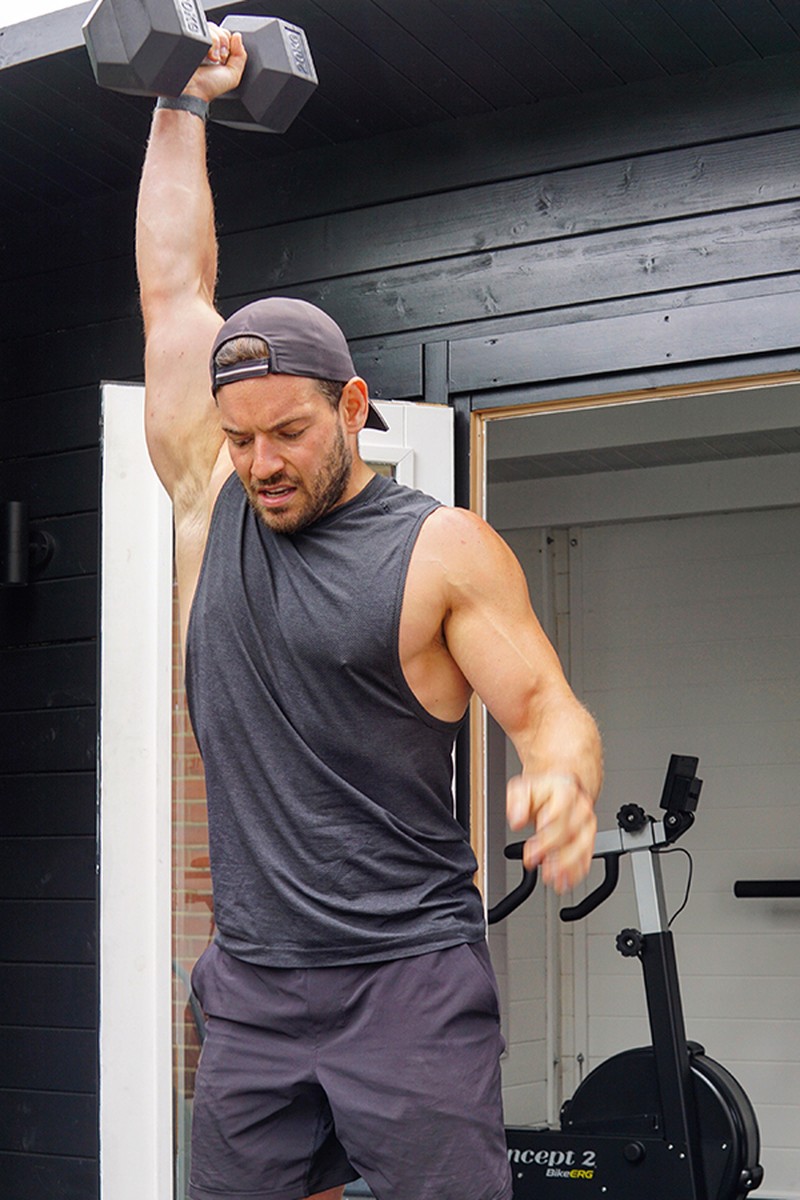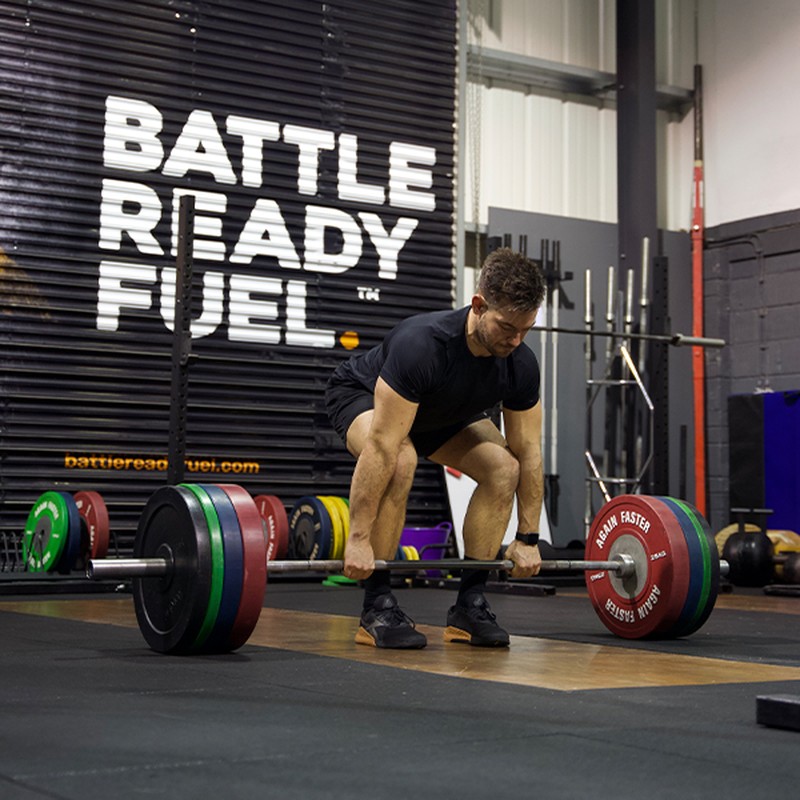My Fitness Rules: Harvey Lawton

Train like an athlete. Do the basics well, and do them over and over again. An intense workout (performing at 85% of your maximum) is only needed once or twice a week. Instead, incorporate strength training with skill work daily – kettlebells are a great tool for this. Aerobic capacity is also the unsung hero, so build that engine too. Building aerobic capacity involves training for adaptation. Working at different intensities over the week is key, favouring longer, lower intensity work in the heart rate zones two to three, while drip-feeding shorter, more intense sessions pushing to 85-95% of your maximum effort. It's important to respect your aerobic system in the same way you would training a muscle, and progressively applying recoverable stress.
Mobility breeds longevity. With good mobility, you can expect to train harder, for longer. It's a key component of fitness and, when overlooked, will have a significant effect on your training progression. Having previously trained with a sole focus on sports performance and lifting as heavy as possible, I became unstuck with injuries and was forced to recalibrate and revise my training outlook. From then on, I delved into all things corrective exercise and injury prevention, continuing to explore how to optimally blend these protocols with performance training.
Know where you should start. When it comes to mobility, there’s so much confusion about where to begin – the best thing you can do is approach mobility joint by joint. If each joint has the capacity to move efficiently through its active range of movement, then we can rely on the body to move more efficiently in locomotion. Joint controlled articular rotations (CARs) are a great way to do this. Try spine, hip and shoulder CARs either first thing in the morning or before training. Once you have mastered these, move on to more movement-based training protocols utilising multiple joints – think Cossack squats and Turkish get-ups.
/https%3A%2F%2Fslman.com%2Fsites%2Fslman%2Ffiles%2Farticles%2F2020%2F09%2Fhealth-and-fitness-harvey-lawson-2.jpg?itok=KEWzqL0X)
Schedule your week. There’s no one-size-fits-all template when it comes to the ideal week of workouts, but three strength sessions with integrated mobility and shorter, higher intensity conditioning segments, as well as two longer, aerobic sessions performed at a lower intensity (65% effort) will stand you in good stead. Don’t forget to integrate mobility training into every session, with unloaded and loaded movements; and add load to good quality movement patterns in each session.
Take it easy. If you’re a beginner or just getting back into the gym post-Covid, nail the basics and respect the load. Lockdown will likely have forced your hand into more bodyweight training or training with lighter weights at greater volume. Build things back progressively and focus on hitting key patterns across your training, incorporating movements that involve pushing, pulling, rotating and jumping.
Mix it up. If you’re looking to build lean muscle and burn fat, movement and variation is the best combination – lift weights and drip feed intensity into your sessions. Make sure the 45-60 minutes you dedicate to training are spent working and not procrastinating or sitting on your phone. Go in, get the work done and become efficient in your practice both in and outside of the gym.
Remember, moderation is key. It’s not my place to tell anyone how and what to eat, but it is my place to offer advice, share the benefits of healthy eating and highlight the correlation between nutrition and training performance. Cut out the foods you feel have a negative impact on your health and aim to eat more of those that carry greater health benefits, such as whole foods. Try to eat colourful foods, which will keep you satisfied and topped up with key micronutrients.
Always fuel your workout. You can’t go wrong with a double espresso and some oats. Try mixing 80g of oats with 40g of raisins and 275ml of almond milk and blast it in the microwave for two-and-a-half minutes. Once it’s done, stir through 25-35g of nut butter. This meal packs around 500-700 calories of top nutrition to fuel your workout.
/https%3A%2F%2Fslman.com%2Fsites%2Fslman%2Ffiles%2Farticles%2F2020%2F09%2Fhealth-rules-1.jpg?itok=fnd1coYt)
Pay attention to protein. If you’re worried about what macros to hit, prioritise your protein. If you’re active, aim for 1.5-2g of protein per kilo of bodyweight as a daily target, filling the rest of your plate with whole foods in the form of carbs and fats. I don’t follow a specific eating philosophy, but sometimes I fast for 16-32 hours. I get pre-prepared meals delivered daily from Fresh Fitness Food, which are tailored to my macros. I aim for around 3,000 calories daily, but often top this up to 4,000 calories depending on that day’s training.
Consider creatine. As training supplements go, I rank creatine highly to replenish the body's natural stores that take a hit during high intensity training. I take 5g of creatine in the morning, after a training session and again in the evening, aiming for 15-20g per day for four or five days of the week.
Hit the pillow. Sleep is such an underrated form of recovery when it comes to fitness. I use Whoop to track my daily readiness, recovery and training load – I’m a sucker for stats. Other kit I rate includes my Reebok Nanos and Lululemon for clothing.
Understand what healthy means. Training is just one small component to health – it’s an outlet of expression of your physical health, but before that, psychology and environment are key. Being healthy comes down to your mindset.
For more information visit TheMovementBlueprint.Co and follow Harvey on Instagram @HarveyLawtonPT and @TheMovementBlueprint.
*DISCLAIMER: Features published by SLMan are not intended to treat, diagnose, cure or prevent any disease. Always seek the advice of your GP or another qualified healthcare provider for any questions you have regarding a medical condition, and before undertaking any diet, exercise or other health-related programmes.
DISCLAIMER: We endeavour to always credit the correct original source of every image we use. If you think a credit may be incorrect, please contact us at [email protected].


